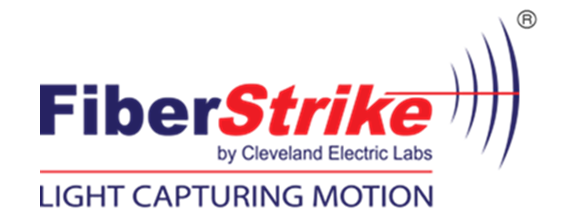Pipeline Leak Detection
FiberStrike acoustic sensors are a great fit for the Oil & Gas Industries because of their effective means of measuring changes in the acoustic signature of product flowing through a pipe and converting that data to the location of a leak or impact event. This real-time data can be monitored on site or remotely. These acoustic sensors can also provide useful information in harsh environments and industrial equipment.

Separate Zones, Numerous Options
The FiberStrike® Pipeline Leak Detection system deploys a series of optical acoustic sensors to accurately identify the location of a pipeline leak or impact event. A “zone” is defined as the distance between any two sensor points. When any two sensors simultaneously detect a leak a determination can be made as to how far from each sensor the activity is occurring and “zero in” on the event. An unlimited number of zones may be linked together to manage vast expanses of pipeline.
Integration
FiberStrike® may be used as a stand-alone Pipeline Leak Detection system, or be melded into a more advanced system solution that could also manage Perimeter Protection, Communications Conduit Monitoring and Substation/Vault Protection. CEL can provide the necessary hardware, software and integration expertise to manage nearly any application.
Downloads

Applications include Industrial Liquid, Gas & Steam Pipelines, Water/Wastewater Utility Pipelines
In the US, there are approximately 1.5 million miles of pipeline, with most of it being used for oil and gas. Pipelines are the most efficient means of transporting product over long distances, and when properly maintained it is the safest way to manage oil and gas. But leaks can happen. When they do, they pose a major threat to the environment. Leaks may be caused by improper maintenance, adjacent construction, ground movement, or sabotage. It is imperative to detect leaks as soon as they happen to minimize loss of product and environmental damage.
Pipeline monitoring methods can be very expensive, but also may be ambiguous or untimely. Current methods for pipeline inspection include:
- External visual inspections from overflights
- Internal pressure and flow measurements at widely separated locations
- Spilled hydrocarbon detectors external to pipeline
These monitoring methods, however, are reactive rather than proactive—they rely on finding physical evidence of leaks on the exterior of the pipeline to zero in on the fault. This means that often leaks go undetected until spillage has caused significant damage to the environment. A 2012 study performed for the USDoT Pipeline and Hazardous Materials Safety Administration (PHMSA) showed control room operators identified leaks in hazardous liquid pipelines only 17 percent of the time.
Leak detection systems comprise of personnel, procedures, and technology. Any implementation that focuses on less than all three, or a weakness in any of these three will be suboptimal. The result may be delayed or imprecise response, with potentially severe consequences that reach beyond the immediate impact of the leakage—especially in high-visibility situations.
FiberStrike®: A More Sophisticated, Sensitive, and Precise Solution.
FiberStrike® is a family of innovative and interconnected fiber-optic based sensors that can sense or measure very slight movements, including sound and vibration. Operating pipelines exhibit a characteristic acoustic signature which changes if an anomaly—a leak or an obstruction—occurs in the pipeline. Proper analysis of acoustic signatures allows immediate detection and location of an anomaly due to a leak, rupture, or puncture.
FiberStrike sensing technology is both sensitive and fast and can augment and enhance the best attributes of both internal and external monitoring methods.
FiberStrike acoustic sensors are a great fit for the oil and gas industries because of their effective means of measuring changes in the acoustic signature of product flowing through a pipe and converting that data to the location of a leak or impact event. This real-time data can be monitored on site or remotely. These acoustic sensors can also provide useful information in harsh environments and industrial equipment.
Integration
FiberStrike® may be used as a stand-alone Pipeline Leak Detection system or be melded into a more advanced system solution that could also manage perimeter protection, communications conduit monitoring and substation/vault protection. CEL can provide the necessary hardware, software, and integration expertise to manage nearly any application.
Separate Zones, Numerous Options
The FiberStrike Pipeline Leak Detection system deploys a combination of fiber optic and electroacoustic technologies to accurately identify the location of a pipeline leak or crack. A “zone” is defined as the distance between any two sensor points. When any two sensors simultaneously detect a leak a determination can be made as to how far from each sensor the activity is occurring and “zero in” on the event. An unlimited number of zones may be linked together to manage vast expanses of pipeline.
Superior Performance
Sensors provide instantaneous event data to the hardware (the Interrogator), and the Interrogator may be located great distances from the actual pipeline in secure, environmentally protected areas. Multiple interrogators may be linked together that are simultaneously streaming real-time data to the Command-and-Control software. Event notifications may then be managed from the customer’s Control Room, or immediately “pushed” to a variety of mobile devices to alert personnel of the situation.
Fiber optic sensors are extremely reliable and become less prone to false alarms the longer they are installed as the system learns the different acoustic signatures that don’t matter to the system.
Installation of fiber optic sensors can happen retroactively, but it is much more cost effective to be installed during pipeline construction. Many underground pipelines that are full operative, however, are not able to receive alterations and additions. Installation is carried out either by Cleveland Electric Labs or the customer, following a comprehensive installation training program.


